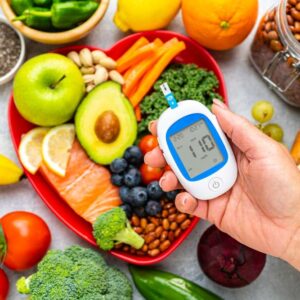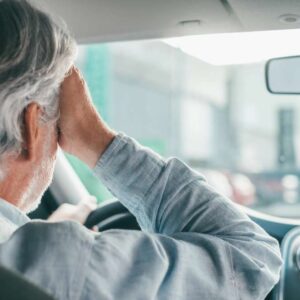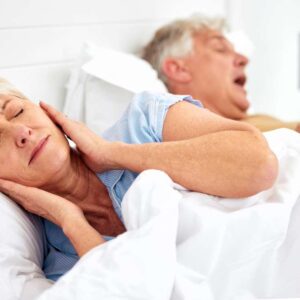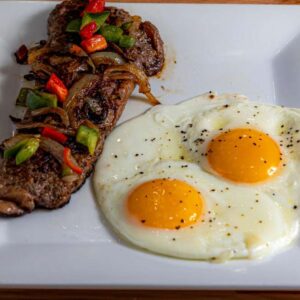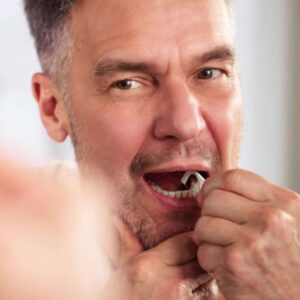
Germ Causes Beautiful, Radiant Skin
Dear Living Well Daily Reader,
“Wait… what?!? You want me to put this where?!”
A while back, I had the opportunity to try a brand-new type of probiotic.
If you’re not familiar with probiotics, these are the good bacteria that keep your body balance and boost your overall health. Typically, probiotics are taken orally to help strengthen the gut.
And that’s why, up until I tried this revolutionary new type, the only probiotics I’d ever experimented with were either food, drink or some type of supplement.
So when I found out exactly where I was supposed to put this probiotic, I was shocked.
You see, this new probiotic, called Mother Dirt AO+, restores bacteria to a place you try very hard to keep clean — your skin. And not just the skin of your hands or body. This bacterium is even beneficial for your face.
You may be thinking how can bacteria be good for my face? Don’t I wash my face and hands to get rid of dangerous bacteria?
That’s exactly what I thought.
And then I tried it.
My skin has never been clearer, suppler, better balanced or younger looking than it has been since using the product for only month.
And that’s why I’ve invited the team from Mother Dirt here to provide you with good information on the origins of their unique products, how they’re best used and what sets them apart from other cleansers and skin care products. Plus, they will share the unusual story of how this amazing bacterium was discovered.
Take it away, Mother Dirt…
Natalie: Thanks for taking the time to answer our questions.
How are these products different from normal cleansers, shampoos and skin care products? What really sets them apart or makes them unique skin care products?
Mother Dirt: Just like our gut relies on good bacteria and probiotics, our skin relies on good bacteria to help us be healthy as well. This elaborate ecosystem is called the skin biome, and we’ve created the first and only line of skin care products that nurture it.
Our AO+ Mist contains a live ammonia-oxidizing bacterium (AOB) that once existed on our skin naturally but have since been wiped away with harsh chemicals in our soaps and personal care products. AOB consume the ammonia in your sweat (which is the irritating component) and convert it into nitric oxide. These bacteria live and are present in all living things in nature, and keep plants not just alive, but thriving. They do the same thing for our skin.
Our shampoo and cleanser do not contain AOB, but they were formulated to be “biome-friendly” and nurture the good bacteria, whereas other products strip it away. They are also all preservative-free, which is why they have expiration dates!
N: So how was this discovered? Is there a story behind how these products were developed?
MD: There’s a great story behind it!
About 15 years ago, our founding scientist, David Whitlock, was on a date with a woman who loved horseback riding. She asked him why her horses rolled in the dirt — and David couldn’t find a good answer. He couldn’t let the question hang, so he set out on a quest to impress her and discover the answer. He even created a bioreactor in his bathtub to culture bacteria from soil samples!
There, in the dirt, he discovered AOB. Ever since he has dedicated his life to studying this incredible bacterium. (He didn’t get the girl in the end, but he got the AOB instead — so it’s still a happy ending!)
N: That’s too bad about his lady but good that he was inspired to make such a great product. Did he also discover why we need skin probiotics?
MD: We’ve really messed with our skin microbiome over time as we’ve added more and more harsh chemical products into our personal care routine, washing so much of our good skin bacteria down the drain. Skin issues are on the rise: Over 80 million people in the U.S. alone suffer from acne, one in six children has eczema and over 50% of adults claim to have sensitive skin. Just like taking probiotics brings your gut microbiome back into balance and improves digestion, misting AOB on your skin brings your skin back into balance.
N: Cool. So which strain (or strains) of bacterium is in Mother Dirt products? Why was it selected?
MD: We have just one strain of bacteria, ammonia-oxidizing bacteria (AOB). AOB consume the irritating component in human sweat — ammonia.
In nature, everywhere ammonia exists, AOB live too — except for on human skin. (Though in nonindustrialized places like the Amazon, where harsh soaps and cleansers are uncommon, people still have AOB on their skin.)
The goal of the AO+ Mist is to bring back a natural balance to the skin microbiome, which can lead to clearer skin, improved oily and dry areas, and help reslove sensitive skin issues like irritation and rough patches.
You may be familiar with some common bacteria in gut probiotics, and you might be surprised that we don’t use any in our skin probiotics. But the bacteria that are good for your skin are very different than the bacteria that are good for your gut! Think about how different the environments of your skin and your gut are.
We’ve been careful to select a bacterium uniquely suited — and necessary — to the skin microbiome.
N: Thanks so much for answering our questions. This has been super informative.
To discover more about Mother Dirt or the AO+ Mist, click here.
Live well,

Natalie Moore
Managing editor, Living Well Daily
P.S. Do you have questions about other types of probiotics? Ask me! nmoore@lfb.org
Written By Natalie Moore
Natalie Moore is a dedicated health researcher with a passion for finding healthy, natural, and science-based solutions. After a decade of direct healthcare experience in western and natural medicine, she was involved in public health research before joining Living Well Daily.
View More Free Articles
This Sleep Mistake Is Doubling Your Disease Risk
Think your inconsistent bedtime is just a harmless habit? Think again. New research reveals that going to bed at different times each night isn’t just making you tired—it could be dramatically increasing your risk of serious diseases. But the key to making sure poor sleep doesn’t derail your health goals likely isn’t what you think…....
Stop Obsessing Over Diet Trends
Can we stop with the endless diet debates already? Every other week there’s a new headline shouting about which diet is best for weight loss, heart health, or diabetes. Paleo, keto, low-carb, high-protein… it’s exhausting. And now, a new meta-analysis is out comparing the Mediterranean diet, the DASH diet, and something called AHEI (that’s “Alternative...
A New Reason to Ditch Processed Junk
If you’ve ever walked the inside aisles of your local grocery store and thought, “This is all just junk,” your instincts were spot on. A new study published in the journal Thorax just added another red flag to the list of dangers linked to ultra-processed food—a 41 percent higher risk of lung cancer. That’s right....
When Being Winded on Stairs Is Serious (And When It Isn’t)
I had an athlete visit me recently because he experienced shortness of breath while climbing stairs. He is in great shape, so he was worried about what it might mean. “Doc,” he said, “I run five miles three times a week. Why am I huffing and puffing after two flights of stairs?” His concern is...
Study EXPOSES Hidden Danger Lurking in Your Car
We think of our homes and cars as safe havens. But according to a startling new study, they may be flooding your lungs with microscopic plastic particles—every single day. Researchers in France recently found that adults inhale an average of 68,000 microplastic particles daily from indoor air alone. To put that in perspective, that’s about...
Mailbag: Is Modern Food Making You Snore?
“What can cause snoring, and is there a way to correct this issue?” —Seeking Silence Hi Seeking, Snoring happens when the soft tissues in your throat relax and vibrate as air passes through during sleep. While several factors can cause snoring—from sleep position to nasal congestion—I want to share one trigger that might surprise you....
Simple Food Swap SLASHES Dementia Risk 28%
Let’s be honest… who would jump at the chance to cut their dementia risk by 28 percent. And no, you don’t need to run marathons, survive on broccoli, or learn to play the zither (whatever that is) to make it happen. All it takes is one easy swap—something that’s probably already in your refrigerator. Researchers...
This SMART Floss Exposes Hidden Health Danger
Scientists have created dental floss that doesn’t just clean between your teeth—it also tracks your stress while you’re flossing. Now, I know what you’re thinking… “Great—now even flossing is going to stress me out by telling me how stressed I am.” But this fascinating new tool from Tufts University could be a game-changer for understanding...
Is This "Safe" Sweetener Damaging Your Brain?
The headlines are alarming… “Popular Sugar Substitute Linked to Brain Cell Damage” and “Erythritol Could Damage Critical Brain Barrier” are just two of the dozens I’ve spotted recently. But before you toss every sugar-free product in your pantry, let’s take a closer look at what this study actually shows—and what it doesn’t. The latest research...
This Summer Threat Could SPIKE Your Blood Sugar
Picture this… It’s another scorching hot summer day. You crank up the air conditioning while watching the weather forecast, which predicts yet another “record-breaking” heat wave. It’s starting to feel like just another miserably uncomfortable summer. But what you might not realize is that—if you have diabetes—those rising temps could do far more damage to...

